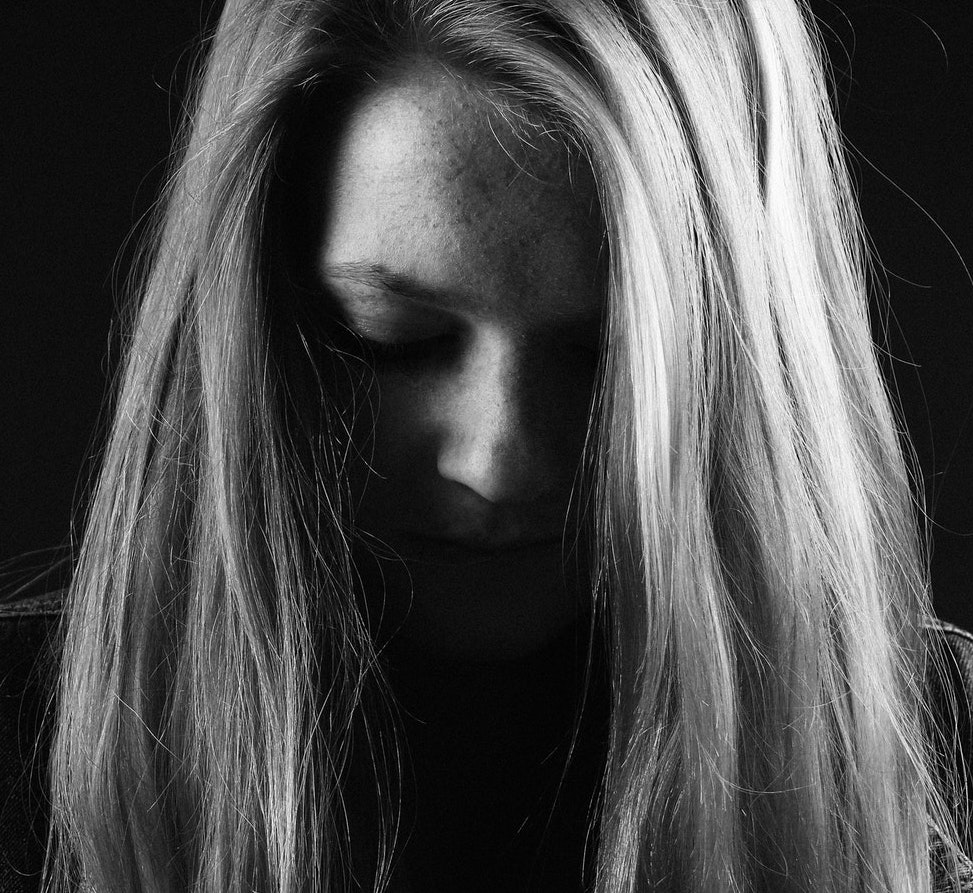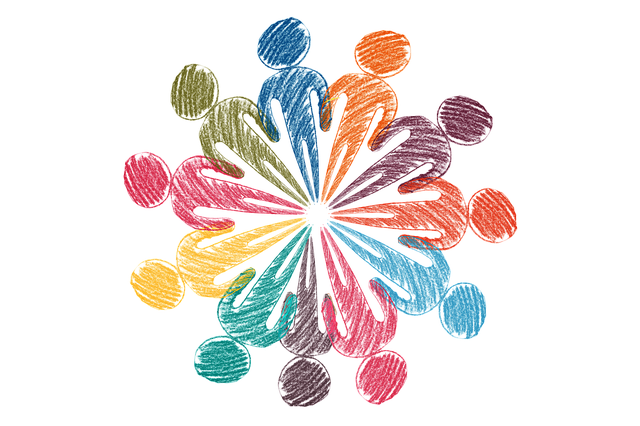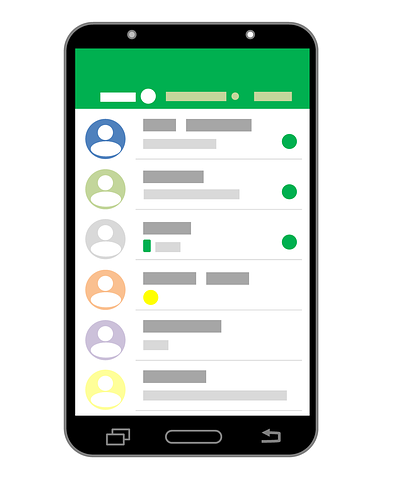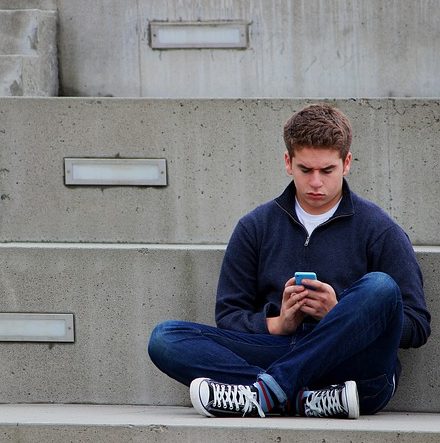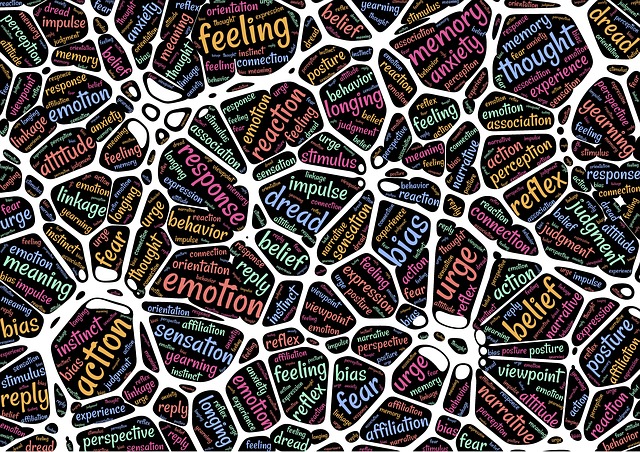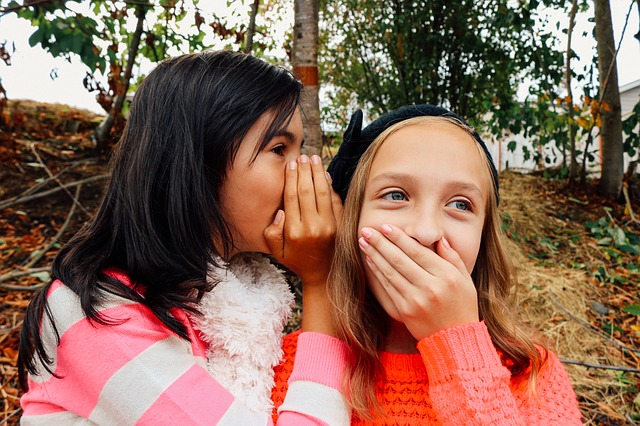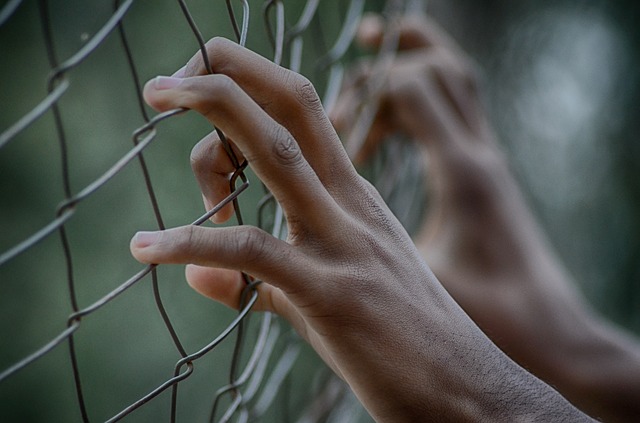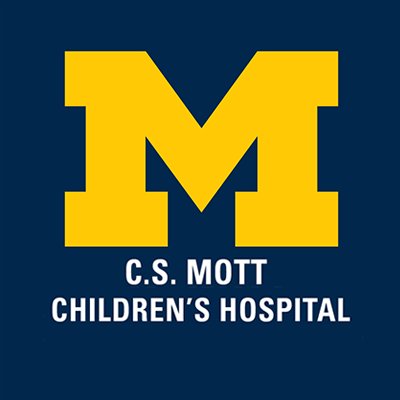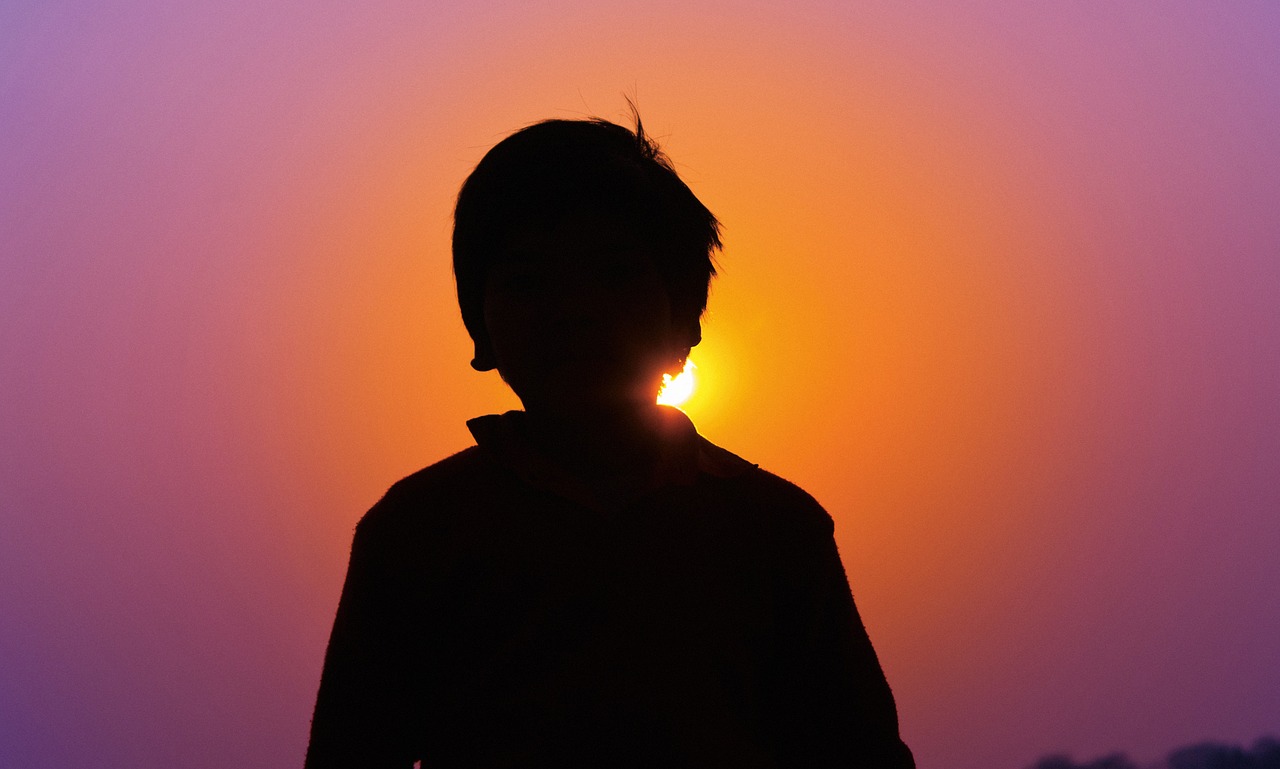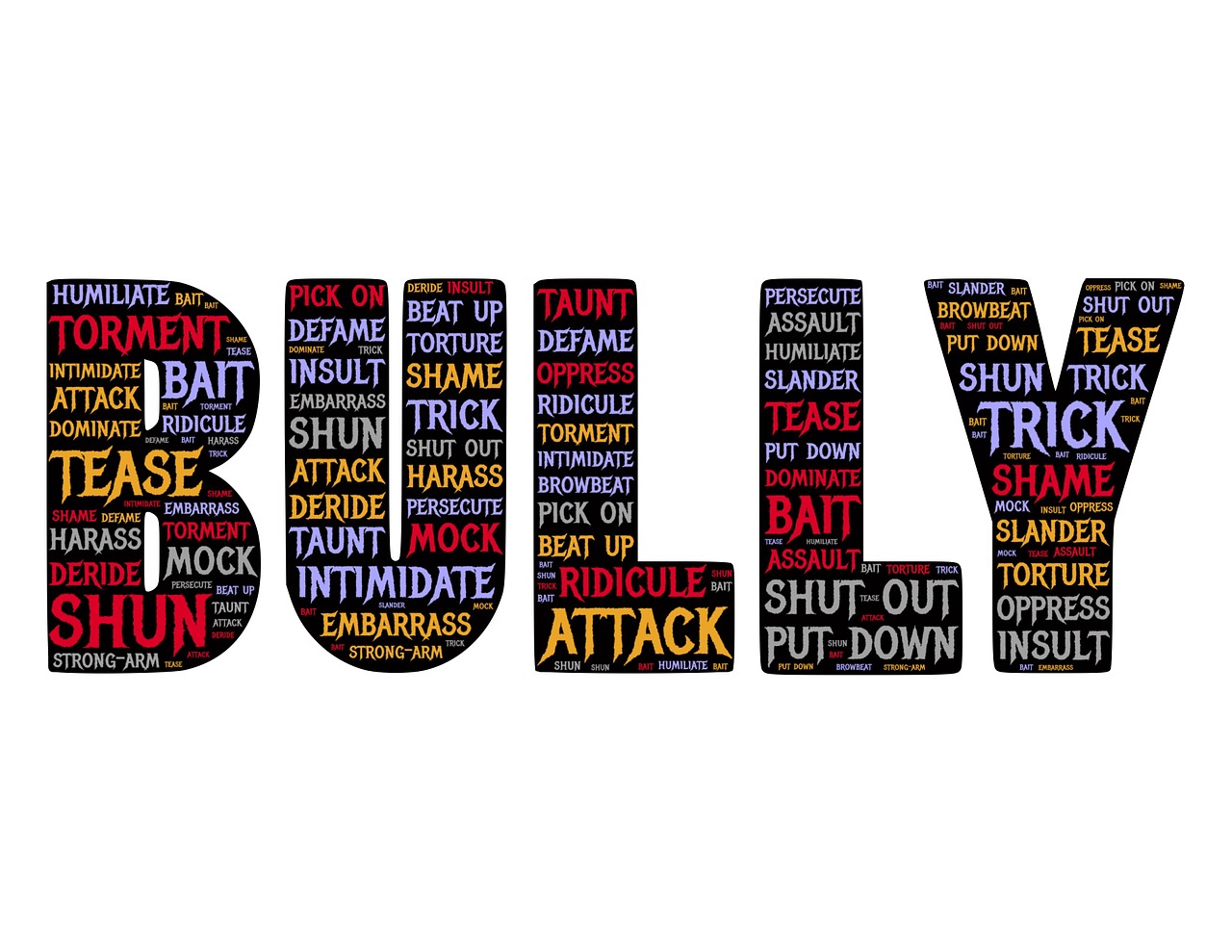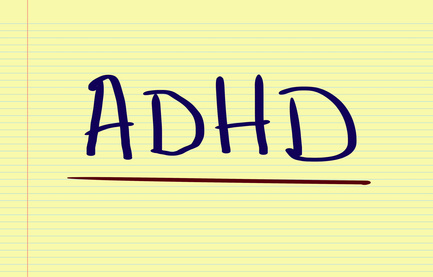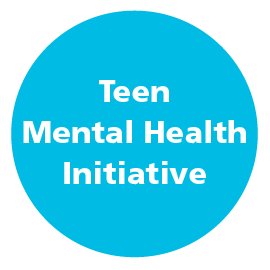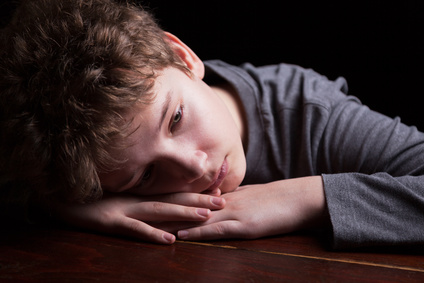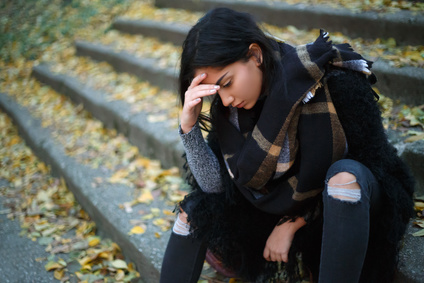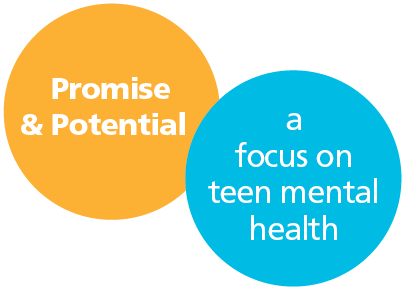News related to: teens
Gov. Gavin Newsom signed legislation on Sunday that pushes school start times later. Under the new law, middle schools will start classes at 8 a.m. or after, while high schools will start classes at 8:30 a.m. or after. Optional early classes will still be allowed.
The law applies to public and charter schools, though rural school districts are exempt. The new start times go into effect by July 1, 2022, or when a school’s collective bargaining agreement with its employees expires, whichever is later. Read more ›
NIMH-Funded Study Finds “13 Reasons Why” Associated with Increase in Youth Suicide Rates
The Netflix show “13 Reasons Why” was associated with a 28.9% increase in suicide rates among U.S. youth ages 10-17 in the month (April 2017) following the show’s release, after accounting for ongoing trends in suicide rates, according to a study published in Journal of the American Academy of Child and Adolescent Psychiatry. The findings highlight the necessity of using best practices when portraying suicide in popular entertainment and in the media. The study was conducted by researchers at several universities, hospitals, and the National Institute of Mental Health (NIMH), part of the National Institutes of Health. NIMH also funded the study. Read more ›
Only 5 Percent of Adolescents Meet Sleep, Exercise, Screen Time Guidelines
A study published in February 2019 in JAMA Pediatrics discovered that only 1 in 20 adolescents are meeting the guidelines and that a discrepancy exists between the sexes. Only three percent of girls get enough sleep and exercise and don’t exceed screen time recommendations, compared to seven percent of boys. Read more ›
With Depression and Suicide Rates on the Rise, National Survey Reveals Complex Relationship Between Social Media Use and Mental Well-Being
A national survey of 14- to 22-year-olds provides new evidence on the growing mental health crisis affecting young people. The survey, sponsored by Hopelab and Well Being Trust (WBT), finds that large numbers of teens and young adults experiencing moderate to severe symptoms of depression are turning to the internet for help, including researching mental health issues online (90 percent), accessing other people’s health stories through blogs, podcasts, and videos (75 percent), using mobile apps related to well-being (38 percent), and connecting with health providers through digital tools such as texting and video chat (32 percent). Read more ›
More Screen Time for Teens Linked to ADHD Symptoms
Most teens today own a smartphone and go online every day, and about a quarter of them use the internet “almost constantly,” according to a 2015 report by the Pew Research Center.
A study published on July 17, 2018 in JAMA suggests that such frequent use of digital media by adolescents might increase their odds of developing symptoms of attention deficit hyperactivity disorder. Read more ›
CHC in the Press: ‘Breaking the Silence’ on Youth Mental Health
“There is so much I wish someone had told you.”
This quote, from an anonymous teenager directed to her future self, is from a new book a group of local teenagers wrote to address their sense that there is a lack of guidance to help young people cope with mental health issues. An unfiltered view of the experiences of local teens, the book aims to help any reader, young or old, better understand mental illness. Read more ›
Can Greater Academic Demands Lead to Less Risky Behavior in Teenagers?
Strengthening high school graduation requirements in math and science could curb youth drinking, with no increase in cigarette or marijuana use, a new study suggests. Read more ›
45% of Teens Say They’re Stressed “All the Time,” Turn to Online Resources and Apps for Help Says Poll
In a recent poll that asked tens of thousands of high school students how often they feel stressed, nearly 45% said “all the time,” citing relationships and teachers as the primary reasons why. “How often are you stressed,” was one of the four questions asked in the stress and mental health awareness poll hosted by the social network After School. Read more ›
Screen-Addicted Teens are Unhappy
Researchers found that teens who spent a lot of time in front of screen devices — playing computer games, using more social media, texting and video chatting — were less happy than those who invested time in non-screen activities like sports, reading newspapers and magazines, and face-to-face social interaction. The happiest teens used digital media for less than an hour per day. But after a daily hour of screen time, unhappiness rises steadily along with increasing screen time. Read more ›
Standard Depression Survey May Not Work As Well For Black Teens
A recent study, published in the Journal of the Society for Social Work and Research, suggests that different groups of people also talk about depression differently. In particular, poorer black kids discuss their feelings of depression differently than other demographic groups. Read more ›
Helping Strangers May Help Teens’ Self-Esteem
A study published in December in the Journal of Adolescence, suggests that altruistic behaviors, including large and small acts of kindness, may raise teens’ feelings of self-worth. However, not all helping behaviors are the same. The researchers found that adolescents who assisted strangers reported higher self-esteem one year later. Read more ›
Teenage Brains Can’t Tell What’s Important and What Isn’t
Adults are generally pretty good at being able to tell when a situation is worthy of extra time or concentration. Research has found that, when potential rewards or losses are higher, for example, adults will perform better on tasks. But this doesn’t seem to be the case for adolescents. Read more ›
Being Popular: Why it Consumes Teens and Continues to Affect Adults
Popularity is a loaded word. For many adults, it evokes powerful memories of jockeying for position in high school cafeterias and hallways.
“The urge to be popular among our peers reaches its zenith in adolescence,” said Mitch Prinstein, a professor of psychology and author of Popular: The Power of Likability in a Status-Obsessed World. “So the messages you get at age 14 about who you are and how the world works will affect how you behave when you are 40.” Read more ›
Why Are More American Teenagers Than Ever Suffering From Severe Anxiety?
Over the last decade, anxiety has overtaken depression as the most common reason college students seek counseling services. In its annual survey of students, the American College Health Association found a significant increase — to 62 percent in 2016 from 50 percent in 2011 — of undergraduates reporting “overwhelming anxiety” in the previous year. Surveys that look at symptoms related to anxiety are also telling. Read more ›
In Tough Neighborhoods, Can High-School Mental Health Counselors Cut the School-to-Prison Pipeline?
When he was 16, DeMarrco Nicholson came home to find his mother unresponsive in the bathroom of their Washington, D.C., apartment, dead from sudden heart failure. In a matter of weeks, he was separated from his siblings, thrown into foster care and bounced from group home to group home in Anacostia, one of the poorest, high-crime neighborhoods in the nation’s capital. Read more ›
CHC in the Press: Online Searches About Suicide Climbed After ’13 Reasons Why’ Premiere
Internet searches related to suicide increased 19% in the three weeks after the premiere of the Netflix show 13 Reasons Why, found new research. That increase translated to approximately 900,000 to 1.5 million more searches than would be expected without the show. Read more ›
Study Finds Digital Dating Abuse Worse for Girls
A new study by the University of Michigan and the University of California Santa Barbara found that girls are more negatively affected by digital dating abuse.
Researchers at the University of Michigan and University of California-Santa Barbara examined the impact of gender on high schoolers’ experience of digital dating abuse behaviors, which include use of cell phones or internet to harass, control, pressure or threaten a dating partner. Read more ›
Students Say They Don’t Know Where to Turn for Mental Health Services
“Kind Communities – A Bridge to Youth Mental Wellness” was released today by the Born This Way Foundation, which was founded by Lady Gaga in 2012 to assist young people in achieving mental and emotional well-being.
The survey cataloged a number of different issues as reported by 3,015 young people between the ages of 15 and 24, as well as 1,004 parents in an online survey, including how students view their own mental health —including how they strive to alleviate mental health issues — Read more ›
13 Reasons Why: Important Update
Dear Friends of CHC:
Just as Netflix’s 13 Reasons Why was beginning to air in early April, we sent out a note of concern.
One month later, we are learning that this is the most talked about show on social media and that it is more concerning than was originally thought. Two IOP teen therapists from CHC’s Adolescent Mental Health Services Department, Dr. Anna Parnes and Jennifer Leydecker advise, “If your kids have watched it or plan to watch it, it’s critical that you watch the program too so you are aware of the content.” For those of you who haven’t heard, the show is a fictional account of a teenage girl, Hannah, who dies by suicide and leaves behind audio tapes outlining the 13 people she blames for her death. We strongly suggest parent caution, monitoring and dialogue about the program and its topics of suicide, survivor guilt, sexual assault and bullying and shaming.
Menlo Park Mom Launching App to Help Boys, Parents Connect
A Menlo Park mother plans to launch a mobile app that uses artificial intelligence and a cartoon squirrel to help adolescent boys better communicate their emotional state with parents.
Patrina Mack, founder of the app called K’Bro — short for “Are you OK, bro?” — said the idea came to her when she was going through a tough divorce and observed how difficult it was for her young son. Read more ›
Kids Are Being Kept Awake by Their Phones Even When They’re Not Using Them
Cell phones, tablets and computers are keeping children and teenagers awake at night—even when they’re not being used, new research has found.
The paper, published in JAMA Pediatrics, found that media devices are contributing to reduced sleep quality and quantity, as well as trouble staying awake the next day. According to the study, 72% of all children and 89% of adolescents have at least one device in their sleep environment, with most of them used near bedtime. Read more ›
NIH Panel Develops 10-Year Plan for Preventing Youth Suicide
More than 42,000 Americans die from suicide each year. It’s the 10th leading cause of death in the United States and the second leading cause of death in youth (10 to 24 years of age) and young adults (25 to 34 years of age), claiming the lives of 12,073 individuals in these age brackets in 2014, according to the Centers for Disease Control and Prevention. Risk factors such as depression, other mental disorders, and substance use, along with precipitating events such as relationship loss or disruption; and environmental circumstances like barriers to accessing mental health treatment, can contribute to suicidal behavior.
An independent panel convened by the National Institutes of Health (NIH) has developed a 10-year roadmap for advancing research to prevent youth suicide. The panel listed 29 recommendations that address three critical issues: improving data systems, enhancing data collection and analysis methods, and strengthening the research and practice community. Read more ›
Teen Suicide is Contagious, and the Problem is Worse Than We Thought
Even though her mother had no sense that Riley was having problems, she knew it was important to talk to her daughter about suicide, and so she did. Between 2013 and 2015, 29 kids in their county had killed themselves, many from just a handful of schools, including Riley’s. There had been gunshot deaths, hangings and drug overdoses. And then there were those choking deaths the victims’ parents insisted were accidental.
Riley knew of at least two of the kids who had killed themselves the previous winter: an older girl at school (they had mutual friends) and a boy in her Christian youth group. Such peripheral connections are all that seem to connect most of the kids in the area who had killed themselves, and school and county officials began to worry they were witnessing a copycat effect…until copycat became too weak a word. It was more like an outbreak, a plague spreading through school hallways. Read more ›
ADHD Medication Reduces Risky Behavior in Children, Teens, Research Finds
New research provides some of the first evidence that medications taken by millions of American children to treat attention-deficit/hyperactivity disorder (ADHD) offer long-term benefits.
Based on an analysis of Medicaid claims for nearly 150,000 children diagnosed with ADHD in South Carolina between 2003 and 2013, researchers including Princeton University postdoctoral associate Anna Chorniy found treatment with ADHD medication made children less likely to suffer consequences of risky behaviors such as sexually transmitted diseases, substance abuse during their teen years and injuries.
Gunn Grad Leads Local Crisis Text Line Effort
Libby Craig, a Palo Alto native and Gunn High School graduate, spent four hours every Sunday night for several months this year as a volunteer crisis counselor for Crisis Text Line, a free, confidential, 24/7 support service accessible nationwide by simply texting the number 741741. Recently, she joined the nonprofit organization full time and is leading Crisis Text Line’s efforts to grow the service in the Bay Area, in part in response to the youth suicide clusters in her own hometown. Read more ›
Kids in Crisis: One-Third of California 11th-Graders Surveyed Say They Are Chronically Sad
In a potential crisis crossing demographic lines, one-third of California’s 11th-graders and one-quarter of seventh-graders reported feeling chronically sad or hopeless over the past 12 months, a survey released on July 18 showed.
The California Healthy Kids Survey also found that about 19 percent of both ninth-graders and 11th-graders seriously considered attempting suicide.
Among the questions, students were asked if they felt so sad or hopeless almost every day for two weeks or more that it stopped them from doing usual activities — symptoms of depression. Their answers, compared with the previous survey two years ago, represented a 1 percentage-point increase for ninth-graders, and less than a percentage point increase for seventh and 11th-graders.
Teen Mental Health Initiative: Announcing New Opportunities and Activities for Teens
Palo Alto and the neighboring SF peninsula communities have been significantly impacted by teen anxiety, depression and suicide. Children’s Health Council’s Teen Mental Health Initiative focuses on this serious issue and what we can do about it.
The Teen Mental Health Initiative began with CHC’s 3rd annual Breakfast in February, which included an interactive panel discussion with experts who offered a variety of perspectives, strategies, and recommendations for supporting teens in crisis. After the breakfast, CHC extended these important discussions through a variety of community outreach efforts, such as workshops, forum discussions, and community coffees.
Today, Children’s Health Council is pleased to announce new opportunities and activities for teens that will be offered as part of our Teen Mental Health Initiative. Led by CHC’s Dr. Anna Parnes and Bridget Stolee McCormick, LMFT: Read more ›
Youth Suicide Rates Have Climbed Since 1999, Data Show
Stunning increases in U.S. suicide rates for all ages gripped headlines today as the Centers for Disease Control and Prevention released new data on the subject.
Overlooked in many stories: While the numbers of suicides for children remain low compared to other populations, girls aged 10-14 had the highest growth in suicide rates of any group between 1999 and 2014, the most recent year reported in federal data. In that time, the rate of suicides for girls in that age group tripled, growing from 0.5 per 100,000 people to 1.5 per 100,000 people. Read more ›
Why Do Girls Tend to Have More Anxiety Than Boys?
Why is it that girls tend to be more anxious than boys?
It may start with how they feel about how they look. Some research has shown that in adolescence, girls tend to become more dissatisfied with their bodies, whereas boys tend to become more satisfied with their bodies. Another factor has to do with differences in how girls and boys use social media. A girl is much more likely than a boy to post a photo of herself wearing a swimsuit, while the boy is more likely to post a photo where the emphasis is on something he has done rather than on how he looks. Read more ›
Preventing Teen Suicide: Schools Target Asian Parental Expectations
A growing dialogue within Asian communities is playing out in many of the Bay Area’s high-performing school districts, but the challenge of easing student pressure is also raising tensions and even a backlash from parents and highly motivated students — who worry reforms might dumb down learning.
California’s Asian teen suicide rate has fluctuated over the years, but through 2013 — the latest figures available — generally remained below the rate of white teens. Educators and doctors, however, say the signs of stress are disturbing . . . Read more ›
U.S. Panel Reaffirms Depression Screening for Adolescents
Adolescents between 12 and 18 years old in the U.S. should be screened for depression, according to guidelines reaffirmed by a government-backed panel of prevention experts.
The U.S. Preventive Services Task Force (USPSTF) says about 8 percent of U.S. adolescents experience major depression each year. Less is known about how common the condition is among younger children, however. Read more ›
Disturbing Suicide Cluster Prompts CDC to Start Investigation in Palo Alto
In Palo Alto, members of the Center for Disease Control and Prevention’s epidemiological assistance team are scheduled to begin an investigation this week on the “suicide contagion” risk in a similar way they may investigate a viral or bacterial outbreak that spreads through a community. As federal officials arrive in Palo Alto, they will face a community that is trying to find innovative ways to combat suicide when it becomes a “contagion.” Read more ›
Parents Start Local Mental-Health Support Group
A group of parents who saw a need for a locally based, ongoing group to support other parents concerned about the mental health and well-being of their teens will be launching such a group this month.
The mental-health subcommittee of parent-advocacy group SELPA 1 CAC will host its first “Parent Chat” on Tuesday, Feb. 23, at the Los Altos Library. The group is supposed to be peer-driven, though a licensed marriage and family therapist will attend as a facilitator, and is open to parents of any children ages 14 and up. Read more ›
‘Changing the Tide’ on Youth Mental Illness
More than 300 local parents, educators, clinicians and community members gathered Tuesday morning to discuss ways to combat what one speaker called the “new norm” for teenagers in the area: alarmingly high rates of anxiety, stress, depression and death by suicide.
The Children’s Health Council (CHC), a Palo Alto nonprofit that supports youth with anxiety, depression, ADHD and learning differences through services and school sites, devoted an annual breakfast panel to the topics. CHC billed the event as a “call to action” for a community continuing to cope and learn from two separate youth suicide clusters in the last several years. Read more ›
Report on Media Use By Tweens and Teens
On average, tweens (age 8 to 12) and teens (age 13 to 18) use many different devices and consume tremendous amounts of media. A new Common Sense Media report, Common Sense Census: Media Use by Tweens and Tweens, uncovers patterns that could spark improvements in content, access, and learning.
The report, based on a nationally representative survey of 2,658 8- to 18-year-olds, identifies distinct types of media users with different patterns of use: Heavy Viewers, Light Users, Social Networkers, Video Gamers, Mobile Gamers, Gamers/Computer Users, and Readers. The recognition of these new user profiles can help parents understand that there’s no such thing as an “average media user” and that kids’ media use may actually be a reflection of deeper needs (for example, to connect with others or learn a new skill). Read more ›
Parental Monitoring Tied to Less Risky Sexual Behaviors in Teens
In a recent study, watchful parents had teens who engaged in fewer risky sexual behaviors.
Researchers pooled data from 30 studies published between 1984 and 2014 about adolescent sexual risk and parental monitoring. The studies were as small as 106 participants and as large as 10,575, with ages ranging from 10 to 17.
A higher level of general parental monitoring, being knowledgeable about their children’s activities and enforcing rules were tied to adolescents waiting to have sex and to increased use of condoms and contraceptives.
Read the full article on News Daily.
The Adolescent Brain Subject of Long-Term Federal Study
Every educator or parent who’s wondered what’s going on in the heads of moody, socially obsessed teenagers may soon get an answer. The National Institutes of Health will dedicate $300 million over the next decade to launch the largest, most comprehensive study to date of how children’s brains develop during adolescence.
The Adolescent Brain Cognitive Development study, or ABCD, will bring together researchers from nearly two dozen institutions across the country to track the development of 10,000 children, ages 9 and 10, over the next decade. Read more ›
Mental Health Once Again Most Common Cause of Hospital Admission Among CA Children
Nearly 40,000 California children ages 5-19, or 5 of every 1,000, were hospitalized for mental health issues in 2014, according to the most recent data available on kidsdata.org. In fact, since 2008, Mental Diseases and Disorders have accounted for the largest share of hospital admissions of children ages 0-17 in California. Read more ›
M Magazine Publishes Article by Dr. Katherine DeVaul
“My Kid Is Fine: How Teen Depression Deceives Us” written by Dr. Katherine DeVaul of Children’s Health Council was published in the October 2011 issue of M magazine. Read more ›
NIMH-Funded Study Finds “13 Reasons Why” Associated with Increase in Youth Suicide Rates
The Netflix show “13 Reasons Why” was associated with a 28.9% increase in suicide rates among U.S. youth ages 10-17 in the month (April 2017) following the show’s release, after accounting for ongoing trends in suicide rates, according to a study published in Journal of the American Academy of Child and Adolescent Psychiatry. The findings highlight the necessity of using best practices when portraying suicide in popular entertainment and in the media. The study was conducted by researchers at several universities, hospitals, and the National Institute of Mental Health (NIMH), part of the National Institutes of Health. NIMH also funded the study. Read more ›
Only 5 Percent of Adolescents Meet Sleep, Exercise, Screen Time Guidelines
A study published in February 2019 in JAMA Pediatrics discovered that only 1 in 20 adolescents are meeting the guidelines and that a discrepancy exists between the sexes. Only three percent of girls get enough sleep and exercise and don’t exceed screen time recommendations, compared to seven percent of boys. Read more ›
With Depression and Suicide Rates on the Rise, National Survey Reveals Complex Relationship Between Social Media Use and Mental Well-Being
A national survey of 14- to 22-year-olds provides new evidence on the growing mental health crisis affecting young people. The survey, sponsored by Hopelab and Well Being Trust (WBT), finds that large numbers of teens and young adults experiencing moderate to severe symptoms of depression are turning to the internet for help, including researching mental health issues online (90 percent), accessing other people’s health stories through blogs, podcasts, and videos (75 percent), using mobile apps related to well-being (38 percent), and connecting with health providers through digital tools such as texting and video chat (32 percent). Read more ›
More Screen Time for Teens Linked to ADHD Symptoms
Most teens today own a smartphone and go online every day, and about a quarter of them use the internet “almost constantly,” according to a 2015 report by the Pew Research Center.
A study published on July 17, 2018 in JAMA suggests that such frequent use of digital media by adolescents might increase their odds of developing symptoms of attention deficit hyperactivity disorder. Read more ›
CHC in the Press: ‘Breaking the Silence’ on Youth Mental Health
“There is so much I wish someone had told you.”
This quote, from an anonymous teenager directed to her future self, is from a new book a group of local teenagers wrote to address their sense that there is a lack of guidance to help young people cope with mental health issues. An unfiltered view of the experiences of local teens, the book aims to help any reader, young or old, better understand mental illness. Read more ›
Can Greater Academic Demands Lead to Less Risky Behavior in Teenagers?
Strengthening high school graduation requirements in math and science could curb youth drinking, with no increase in cigarette or marijuana use, a new study suggests. Read more ›
45% of Teens Say They’re Stressed “All the Time,” Turn to Online Resources and Apps for Help Says Poll
In a recent poll that asked tens of thousands of high school students how often they feel stressed, nearly 45% said “all the time,” citing relationships and teachers as the primary reasons why. “How often are you stressed,” was one of the four questions asked in the stress and mental health awareness poll hosted by the social network After School. Read more ›
Screen-Addicted Teens are Unhappy
Researchers found that teens who spent a lot of time in front of screen devices — playing computer games, using more social media, texting and video chatting — were less happy than those who invested time in non-screen activities like sports, reading newspapers and magazines, and face-to-face social interaction. The happiest teens used digital media for less than an hour per day. But after a daily hour of screen time, unhappiness rises steadily along with increasing screen time. Read more ›
Standard Depression Survey May Not Work As Well For Black Teens
A recent study, published in the Journal of the Society for Social Work and Research, suggests that different groups of people also talk about depression differently. In particular, poorer black kids discuss their feelings of depression differently than other demographic groups. Read more ›
Helping Strangers May Help Teens’ Self-Esteem
A study published in December in the Journal of Adolescence, suggests that altruistic behaviors, including large and small acts of kindness, may raise teens’ feelings of self-worth. However, not all helping behaviors are the same. The researchers found that adolescents who assisted strangers reported higher self-esteem one year later. Read more ›
Teenage Brains Can’t Tell What’s Important and What Isn’t
Adults are generally pretty good at being able to tell when a situation is worthy of extra time or concentration. Research has found that, when potential rewards or losses are higher, for example, adults will perform better on tasks. But this doesn’t seem to be the case for adolescents. Read more ›
Being Popular: Why it Consumes Teens and Continues to Affect Adults
Popularity is a loaded word. For many adults, it evokes powerful memories of jockeying for position in high school cafeterias and hallways.
“The urge to be popular among our peers reaches its zenith in adolescence,” said Mitch Prinstein, a professor of psychology and author of Popular: The Power of Likability in a Status-Obsessed World. “So the messages you get at age 14 about who you are and how the world works will affect how you behave when you are 40.” Read more ›
Why Are More American Teenagers Than Ever Suffering From Severe Anxiety?
Over the last decade, anxiety has overtaken depression as the most common reason college students seek counseling services. In its annual survey of students, the American College Health Association found a significant increase — to 62 percent in 2016 from 50 percent in 2011 — of undergraduates reporting “overwhelming anxiety” in the previous year. Surveys that look at symptoms related to anxiety are also telling. Read more ›
In Tough Neighborhoods, Can High-School Mental Health Counselors Cut the School-to-Prison Pipeline?
When he was 16, DeMarrco Nicholson came home to find his mother unresponsive in the bathroom of their Washington, D.C., apartment, dead from sudden heart failure. In a matter of weeks, he was separated from his siblings, thrown into foster care and bounced from group home to group home in Anacostia, one of the poorest, high-crime neighborhoods in the nation’s capital. Read more ›
CHC in the Press: Online Searches About Suicide Climbed After ’13 Reasons Why’ Premiere
Internet searches related to suicide increased 19% in the three weeks after the premiere of the Netflix show 13 Reasons Why, found new research. That increase translated to approximately 900,000 to 1.5 million more searches than would be expected without the show. Read more ›
Study Finds Digital Dating Abuse Worse for Girls
A new study by the University of Michigan and the University of California Santa Barbara found that girls are more negatively affected by digital dating abuse.
Researchers at the University of Michigan and University of California-Santa Barbara examined the impact of gender on high schoolers’ experience of digital dating abuse behaviors, which include use of cell phones or internet to harass, control, pressure or threaten a dating partner. Read more ›
Students Say They Don’t Know Where to Turn for Mental Health Services
“Kind Communities – A Bridge to Youth Mental Wellness” was released today by the Born This Way Foundation, which was founded by Lady Gaga in 2012 to assist young people in achieving mental and emotional well-being.
The survey cataloged a number of different issues as reported by 3,015 young people between the ages of 15 and 24, as well as 1,004 parents in an online survey, including how students view their own mental health —including how they strive to alleviate mental health issues — Read more ›
13 Reasons Why: Important Update
Menlo Park Mom Launching App to Help Boys, Parents Connect
A Menlo Park mother plans to launch a mobile app that uses artificial intelligence and a cartoon squirrel to help adolescent boys better communicate their emotional state with parents.
Patrina Mack, founder of the app called K’Bro — short for “Are you OK, bro?” — said the idea came to her when she was going through a tough divorce and observed how difficult it was for her young son. Read more ›
Kids Are Being Kept Awake by Their Phones Even When They’re Not Using Them
Cell phones, tablets and computers are keeping children and teenagers awake at night—even when they’re not being used, new research has found.
The paper, published in JAMA Pediatrics, found that media devices are contributing to reduced sleep quality and quantity, as well as trouble staying awake the next day. According to the study, 72% of all children and 89% of adolescents have at least one device in their sleep environment, with most of them used near bedtime. Read more ›
NIH Panel Develops 10-Year Plan for Preventing Youth Suicide
More than 42,000 Americans die from suicide each year. It’s the 10th leading cause of death in the United States and the second leading cause of death in youth (10 to 24 years of age) and young adults (25 to 34 years of age), claiming the lives of 12,073 individuals in these age brackets in 2014, according to the Centers for Disease Control and Prevention. Risk factors such as depression, other mental disorders, and substance use, along with precipitating events such as relationship loss or disruption; and environmental circumstances like barriers to accessing mental health treatment, can contribute to suicidal behavior.
An independent panel convened by the National Institutes of Health (NIH) has developed a 10-year roadmap for advancing research to prevent youth suicide. The panel listed 29 recommendations that address three critical issues: improving data systems, enhancing data collection and analysis methods, and strengthening the research and practice community. Read more ›
Teen Suicide is Contagious, and the Problem is Worse Than We Thought
Even though her mother had no sense that Riley was having problems, she knew it was important to talk to her daughter about suicide, and so she did. Between 2013 and 2015, 29 kids in their county had killed themselves, many from just a handful of schools, including Riley’s. There had been gunshot deaths, hangings and drug overdoses. And then there were those choking deaths the victims’ parents insisted were accidental.
Riley knew of at least two of the kids who had killed themselves the previous winter: an older girl at school (they had mutual friends) and a boy in her Christian youth group. Such peripheral connections are all that seem to connect most of the kids in the area who had killed themselves, and school and county officials began to worry they were witnessing a copycat effect…until copycat became too weak a word. It was more like an outbreak, a plague spreading through school hallways. Read more ›
ADHD Medication Reduces Risky Behavior in Children, Teens, Research Finds
New research provides some of the first evidence that medications taken by millions of American children to treat attention-deficit/hyperactivity disorder (ADHD) offer long-term benefits.
Based on an analysis of Medicaid claims for nearly 150,000 children diagnosed with ADHD in South Carolina between 2003 and 2013, researchers including Princeton University postdoctoral associate Anna Chorniy found treatment with ADHD medication made children less likely to suffer consequences of risky behaviors such as sexually transmitted diseases, substance abuse during their teen years and injuries.
Gunn Grad Leads Local Crisis Text Line Effort
Libby Craig, a Palo Alto native and Gunn High School graduate, spent four hours every Sunday night for several months this year as a volunteer crisis counselor for Crisis Text Line, a free, confidential, 24/7 support service accessible nationwide by simply texting the number 741741. Recently, she joined the nonprofit organization full time and is leading Crisis Text Line’s efforts to grow the service in the Bay Area, in part in response to the youth suicide clusters in her own hometown. Read more ›
Kids in Crisis: One-Third of California 11th-Graders Surveyed Say They Are Chronically Sad
In a potential crisis crossing demographic lines, one-third of California’s 11th-graders and one-quarter of seventh-graders reported feeling chronically sad or hopeless over the past 12 months, a survey released on July 18 showed.
Among the questions, students were asked if they felt so sad or hopeless almost every day for two weeks or more that it stopped them from doing usual activities — symptoms of depression. Their answers, compared with the previous survey two years ago, represented a 1 percentage-point increase for ninth-graders, and less than a percentage point increase for seventh and 11th-graders.
Teen Mental Health Initiative: Announcing New Opportunities and Activities for Teens
Palo Alto and the neighboring SF peninsula communities have been significantly impacted by teen anxiety, depression and suicide. Children’s Health Council’s Teen Mental Health Initiative focuses on this serious issue and what we can do about it.
The Teen Mental Health Initiative began with CHC’s 3rd annual Breakfast in February, which included an interactive panel discussion with experts who offered a variety of perspectives, strategies, and recommendations for supporting teens in crisis. After the breakfast, CHC extended these important discussions through a variety of community outreach efforts, such as workshops, forum discussions, and community coffees.
Today, Children’s Health Council is pleased to announce new opportunities and activities for teens that will be offered as part of our Teen Mental Health Initiative. Led by CHC’s Dr. Anna Parnes and Bridget Stolee McCormick, LMFT: Read more ›
Youth Suicide Rates Have Climbed Since 1999, Data Show
Stunning increases in U.S. suicide rates for all ages gripped headlines today as the Centers for Disease Control and Prevention released new data on the subject.
Overlooked in many stories: While the numbers of suicides for children remain low compared to other populations, girls aged 10-14 had the highest growth in suicide rates of any group between 1999 and 2014, the most recent year reported in federal data. In that time, the rate of suicides for girls in that age group tripled, growing from 0.5 per 100,000 people to 1.5 per 100,000 people. Read more ›
Why Do Girls Tend to Have More Anxiety Than Boys?
Why is it that girls tend to be more anxious than boys?
It may start with how they feel about how they look. Some research has shown that in adolescence, girls tend to become more dissatisfied with their bodies, whereas boys tend to become more satisfied with their bodies. Another factor has to do with differences in how girls and boys use social media. A girl is much more likely than a boy to post a photo of herself wearing a swimsuit, while the boy is more likely to post a photo where the emphasis is on something he has done rather than on how he looks. Read more ›
Preventing Teen Suicide: Schools Target Asian Parental Expectations
A growing dialogue within Asian communities is playing out in many of the Bay Area’s high-performing school districts, but the challenge of easing student pressure is also raising tensions and even a backlash from parents and highly motivated students — who worry reforms might dumb down learning.
California’s Asian teen suicide rate has fluctuated over the years, but through 2013 — the latest figures available — generally remained below the rate of white teens. Educators and doctors, however, say the signs of stress are disturbing . . . Read more ›
U.S. Panel Reaffirms Depression Screening for Adolescents
Adolescents between 12 and 18 years old in the U.S. should be screened for depression, according to guidelines reaffirmed by a government-backed panel of prevention experts.
The U.S. Preventive Services Task Force (USPSTF) says about 8 percent of U.S. adolescents experience major depression each year. Less is known about how common the condition is among younger children, however. Read more ›
Disturbing Suicide Cluster Prompts CDC to Start Investigation in Palo Alto
In Palo Alto, members of the Center for Disease Control and Prevention’s epidemiological assistance team are scheduled to begin an investigation this week on the “suicide contagion” risk in a similar way they may investigate a viral or bacterial outbreak that spreads through a community. As federal officials arrive in Palo Alto, they will face a community that is trying to find innovative ways to combat suicide when it becomes a “contagion.” Read more ›
Parents Start Local Mental-Health Support Group
A group of parents who saw a need for a locally based, ongoing group to support other parents concerned about the mental health and well-being of their teens will be launching such a group this month.
The mental-health subcommittee of parent-advocacy group SELPA 1 CAC will host its first “Parent Chat” on Tuesday, Feb. 23, at the Los Altos Library. The group is supposed to be peer-driven, though a licensed marriage and family therapist will attend as a facilitator, and is open to parents of any children ages 14 and up. Read more ›
‘Changing the Tide’ on Youth Mental Illness
More than 300 local parents, educators, clinicians and community members gathered Tuesday morning to discuss ways to combat what one speaker called the “new norm” for teenagers in the area: alarmingly high rates of anxiety, stress, depression and death by suicide.
The Children’s Health Council (CHC), a Palo Alto nonprofit that supports youth with anxiety, depression, ADHD and learning differences through services and school sites, devoted an annual breakfast panel to the topics. CHC billed the event as a “call to action” for a community continuing to cope and learn from two separate youth suicide clusters in the last several years. Read more ›
Report on Media Use By Tweens and Teens
On average, tweens (age 8 to 12) and teens (age 13 to 18) use many different devices and consume tremendous amounts of media. A new Common Sense Media report, Common Sense Census: Media Use by Tweens and Tweens, uncovers patterns that could spark improvements in content, access, and learning.
The report, based on a nationally representative survey of 2,658 8- to 18-year-olds, identifies distinct types of media users with different patterns of use: Heavy Viewers, Light Users, Social Networkers, Video Gamers, Mobile Gamers, Gamers/Computer Users, and Readers. The recognition of these new user profiles can help parents understand that there’s no such thing as an “average media user” and that kids’ media use may actually be a reflection of deeper needs (for example, to connect with others or learn a new skill). Read more ›
Parental Monitoring Tied to Less Risky Sexual Behaviors in Teens
In a recent study, watchful parents had teens who engaged in fewer risky sexual behaviors.
Researchers pooled data from 30 studies published between 1984 and 2014 about adolescent sexual risk and parental monitoring. The studies were as small as 106 participants and as large as 10,575, with ages ranging from 10 to 17.
A higher level of general parental monitoring, being knowledgeable about their children’s activities and enforcing rules were tied to adolescents waiting to have sex and to increased use of condoms and contraceptives.
Read the full article on News Daily.
The Adolescent Brain Subject of Long-Term Federal Study
Every educator or parent who’s wondered what’s going on in the heads of moody, socially obsessed teenagers may soon get an answer. The National Institutes of Health will dedicate $300 million over the next decade to launch the largest, most comprehensive study to date of how children’s brains develop during adolescence.
The Adolescent Brain Cognitive Development study, or ABCD, will bring together researchers from nearly two dozen institutions across the country to track the development of 10,000 children, ages 9 and 10, over the next decade. Read more ›
Mental Health Once Again Most Common Cause of Hospital Admission Among CA Children
Nearly 40,000 California children ages 5-19, or 5 of every 1,000, were hospitalized for mental health issues in 2014, according to the most recent data available on kidsdata.org. In fact, since 2008, Mental Diseases and Disorders have accounted for the largest share of hospital admissions of children ages 0-17 in California. Read more ›
M Magazine Publishes Article by Dr. Katherine DeVaul
“My Kid Is Fine: How Teen Depression Deceives Us” written by Dr. Katherine DeVaul of Children’s Health Council was published in the October 2011 issue of M magazine. Read more ›

